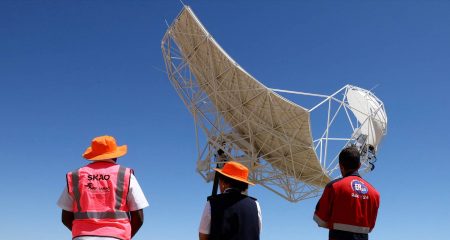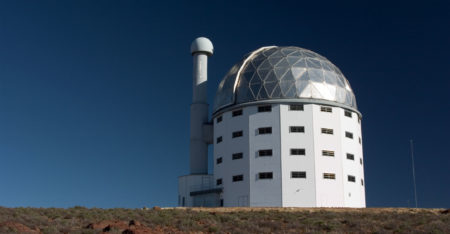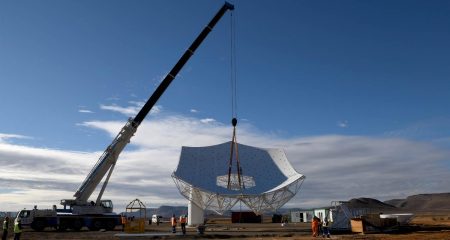Australia and SA will share the location for the world’s most powerful radio telescope, the Square Kilometre Array’s (SKA’s) scientific consortium announced on Friday. Below is the full statement from the SKA Organisation.
The Members of the SKA Organisation today agreed on a dual site solution for the Square Kilometre Array telescope, a crucial step towards building the world’s largest and most sensitive radio telescope.
The ASKAP and MeerKAT precursor dishes will be incorporated into Phase I of the SKA which will deliver more science and will maximise on investments already made by both Australia and South Africa.
The majority of the members were in favour of a dual-site implementation model for SKA. The members noted the report from the SKA Site Advisory Committee that both sites were well suited to hosting the SKA and that the report provided justification for the relative advantages and disadvantages of both locations, but that they identified Southern Africa as the preferred site. The members also received advice from the working group set up to look at dual site options.
The majority of SKA dishes in Phase 1 will be built in South Africa, combined with MeerKAT. Further SKA dishes will be added to the ASKAP array in Australia. All the dishes and the mid frequency aperture arrays for Phase II of the SKA will be built in Southern Africa while the low frequency aperture array antennas for Phase I and II will be built in Australia / New Zealand.
“This hugely important step for the project allows us to progress the design and prepare for the construction phase of the telescope. The SKA will transform our view of the Universe; with it we will see back to the moments after the Big Bang and discover previously unexplored parts of the cosmos.” says Dr Michiel van Haarlem, Interim Director General of the SKA Organisation.
The SKA will enable astronomers to glimpse the formation and evolution of the very first stars and galaxies after the Big Bang, investigate the nature of gravity, and possibly even discover life beyond Earth.
“Today we are a stage closer to achieving our goal of building the SKA. This position was reached after very careful consideration of information gathered from extensive investigations at both candidate sites,” said Professor John Womersley, Chair of the SKA Board of Directors. “I would like to thank all those involved in the site selection process for the tremendous work they have put in to enable us to reach this point.”
Factors taken into account during the site selection process included levels of radio frequency interference, the long term sustainability of a radio quiet zone, the physical characteristics of the site, long distance data network connectivity, the operating and infrastructure costs as well as the political and working environment.
The agreement was reached by the Members of the SKA Organisation who did not bid to host the SKA (Canada, China, Italy, the Netherlands and the United Kingdom). The Office of the SKA Organisation will now lead a detailed definition period to clarify the implementation.
Scientists and engineers from around the world, together with industry partners, are participating in the SKA project which is driving technology development in antennas, data transport, software and computing, and power. The influence of the SKA project extends beyond radio astronomy. The design, construction and operation of the SKA have the potential to impact skills development, employment and economic growth in science, engineering and associated industries, not only in the host countries but in all partner countries.




